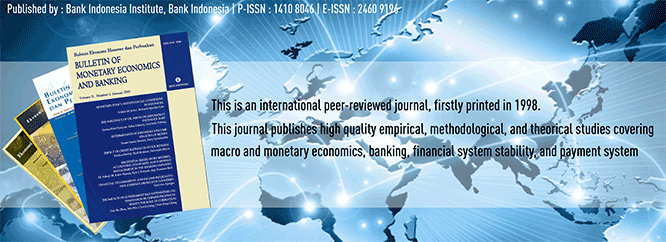
Document Type
Article
Abstract
This paper provides new empirical evidence of the bank stability in relation to the macroeconomic indicator of Indonesia. The bank stability is first calculated using Z-score, and then regressed using Autoregressive distributive lag (ARDL) model on the macroeconomic variables i.e. Gross Domestic Product (GDP) in US dollar, Interest rates (IR) in percentage and Consumer Price Index (CPI). To analyse further the long run relationship and the impact of bank stability, Cholesky standard deviation shock to the model, ARDL and Impulse Response Function (IRF) are used. These ARDL and IRF are carried out independently and repeated over data for three different models: (i) the commercial banks model, (ii) Islamic banks model, and (iii) the overall banking industry model. The empirical findings suggest long run relationship between the stability of commercial banks and macroeconomic factors. The findings also suggest the long run relationship between the stability of overall banking industry and macroeconomic factors. However, there is no evidence of long run relationship between the stability of Islamic banks and macroeconomics factors. Nevertheless, this finding is subject to the limitation of data, on the number of Islamic banks included in the test. The sample of Islamic banks was 5 banks from a total of 10 Islamic banks, due to insufficient data, as compared to the larger number of commercial banks taken into, as the sample.
Recommended Citation
Karim, Norzitah Abdul; Al-Habshi, Syed Musa Syed Jaafar; and Abduh, Muhamad
(2016)
"MACROECONOMICS INDICATORS AND BANK STABILITY: A CASE OF BANKING IN INDONESIA,"
Bulletin of Monetary Economics and Banking: Vol. 18:
No.
4, Article 1.
DOI: https://doi.org/10.21098/bemp.v18i4.609
Available at:
https://bulletin.bmeb-bi.org/bmeb/vol18/iss4/1
First Page
431
Last Page
448
Creative Commons License

This work is licensed under a Creative Commons Attribution-NonCommercial 4.0 International License
Country
Malaysia
Affiliation
International Islamic University Malaysia







